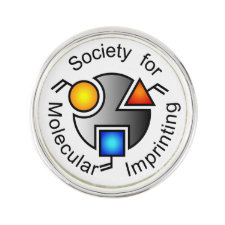
Authors: Fiori M, Civitareale C, Mirante S, Magaro E, Brambilla G
Article Title: Evaluation of two different clean-up steps, to minimise ion suppression phenomena in ion trap liquid chromatography-tandem mass spectrometry for the multi-residue analysis of β-agonists in calves urine.
Publication date: 2005
Journal: Analytica Chimica Acta
Volume: 529
Issue: (1-2)
Page numbers: 207-210.
DOI: 10.1016/j.aca.2004.08.068
Alternative URL: http://www.sciencedirect.com/science/article/B6TF4-4DFK8GN-5/2/816652420149f87f174b62b7cf7aac1b
Abstract: In an analytical strategy, the selectivity of the steps from the extraction to the detection is a key factor to assure both reliability and forensic validity to the results. The availability of MS/MS ion trap facilities could induce the risk to maximise the relevance of MS/MS technique, despite the choice of a more selective clean-up step. In this work, we reported about the evaluation of two different purification procedures, as requisite to minimise both matrix-induced ion suppression phenomena and progressive loss of sensitivity in LC-MS/MS multi-residue beta agonists routine analysis. To this purpose, calves urine extracts from SPE C18 not endcapped (NE) and molecular imprinted polymers (MIPs) columns were tested according to the following procedure: 20 blank samples were analysed and then spiked with pooled beta agonists before and after the clean-up step. Background noise and analytes signals were compared with those from pure standards injected at the same nominal spiking concentration. In such a way, both recovery factors and matrix phenomena were evaluated. Results indicate that MIPs clean-up is effective to reduce ion suppression phenomena below 10%, with no detectable loss of sensitivity after 20 runs. The same results are not achievable with conventional SPE C18, even if absolute recoveries are found to be better
Template and target information: β-agonists, Clenbuterol hydrochloride, Clen, tulobuterol, Tul, isoxsuprine, Isox, formoterol, Form, brombuterol, Brom, mapenterol, Map, ractopamine, Ract, salmeterol, Salm
Author keywords: LC-MS, MS, Ion suppression, MIPs, SPE, Beta agonists



Join the Society for Molecular Imprinting

New items RSS feed
Sign-up for e-mail updates:
Choose between receiving an occasional newsletter or more frequent e-mail alerts.
Click here to go to the sign-up page.
Is your name elemental or peptidic? Enter your name and find out by clicking either of the buttons below!
Other products you may like:
 MIPdatabase
MIPdatabase









